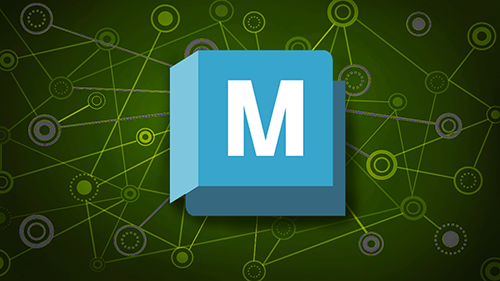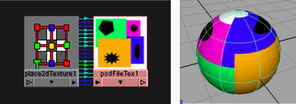Maya supports a wide array of formats to let you share files between many applications.

Maya supports a wide array of formats, from Maya's default ASCII .ma and binary .mb file formats to alembic and USD, letting you share files between many applications.
Save scenes as .ma and .mb
USD
Universal Scene Description (USD) support in Maya lets artists work seamlessly with USD in conjunction with Maya workflows. The pre-built Maya USD open source plug-in is available on Windows, Mac, and Linux. See USD Plug-in for Maya for more information.
PSD support

You can use .psd (Photoshop Document) files in Maya texture nodes. Using PSD files with layer sets facilitate iterative painting.
- Adobe Photoshop artists can add, modify, or delete any number of layers within a layer set while maintaining the connections in Maya (see also Create a PSD file with layer sets from within Maya).
- Maya artists can convert a PSD node to a Layered Texture, and see the layer sets as multiple
PSD File Textures connected to a layered texture in
Hypershade.
Note:
Maya treats all layers within a layer set as a single flattened image.
For more information, see Use PSD Networks as textures and Edit PSD Networks.
Alembic Support
Maya also saves and loads scenes and geometry as Alembic-based cache files. Alembic files are highly portable and application dependent, meaning they can be shared, processed, and played back by a number of content creation applications.
For more information, see the topic Alembic Caching.
Topics in this section
- Send objects to other applications
- Send objects to 3ds Max
- Send Control rigs to MotionBuilder
- Send polygons to Mudbox
- Export a scene to Unity
- Export a scene to Unreal Engine
- Import files with Autodesk Translation Framework (ATF)
- Export files with Autodesk Translation Framework (ATF)
- Maya FBX Plug-in
- Working in Maya in different scales